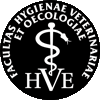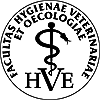Meiosis
TASK 1: Spermiogenesis
PP: rat testes "varle krysa", stained with haematoxylin-eosin.
Observe specimen of rat testes and find seminiferous tubules, where spermiogenesis takes place (different stages). When you start from periphery, there are spermatogonia, small cells with nucleus rich in chromatin. More centripetally you can find primary spermatocytes (spermatocytes of I. order) and secondary spermatocytes (spermatocytes of II. order), that differ in size and in nucleus structure. Close to the centre of seminiferous tubule, there are small spermatids and mature sperm cells.

Fig.: Spermiogenesis in rat testes: A – rat testes with seminiferous tubules, B – seminiferous tubule with different spermiogenesis phases, C - developmental stages of spermiogenesis.
TASK 2: Different shape and size of sperm
PP: sperm of rat, rabbit, horse, boar and bull - "spermie krysa, králík, kůň, kanec, býk"; picture of sperm of other animal species.
Observe sperm of different animal species and compare the shape of sperm head, the size of acrosome (structure on the top of head containing enzymes important for penetrating the egg) and size and number of sperm tails.

Fig.: Sperm of different animal species.
TASK 3: Oogenesis
PP: rat ovary - "ovarium krysa"
Observe the specimen of a rat ovary and find the primary follicle (oocyte surrounded by follicular cells) and mature follicle (Graafian follicle) with multiplied follicle cells and cavities filled with fluid.

Fig.: Oogenesis in rat ovary.
TASK 4: Reproduction of chromosome number during meiosis
PP: stained longitudinal sections of testes of beetle Blaps mortisaga.
Observe several sections of testes and try to find individual phases of meiosis (especially phases of first prophase).

Fig.: Meiosis in longitudinal section of testes of beetle Blaps mortisaga.
Content
- Biology
- Chemical composition
- Non-cellular life
- Prokaryotes and immersion microscopy
- Eukaryotes
- Movement and irritation
- Transport of substances, osmosis
- Mitosis
- Reproduction and development
- Influence of surroundings onto the bioplasm
- Research methods in biology
- Genetics
- Cytogenetics
- Model organism
- Monohybridism
- Polyhybridism
- Polymorphic genes
- Gene interactions
- Inheritance and sex
- Genetic linkage
- Population genetics
- Quantitative genetics
- Nonmendelian inheritance


